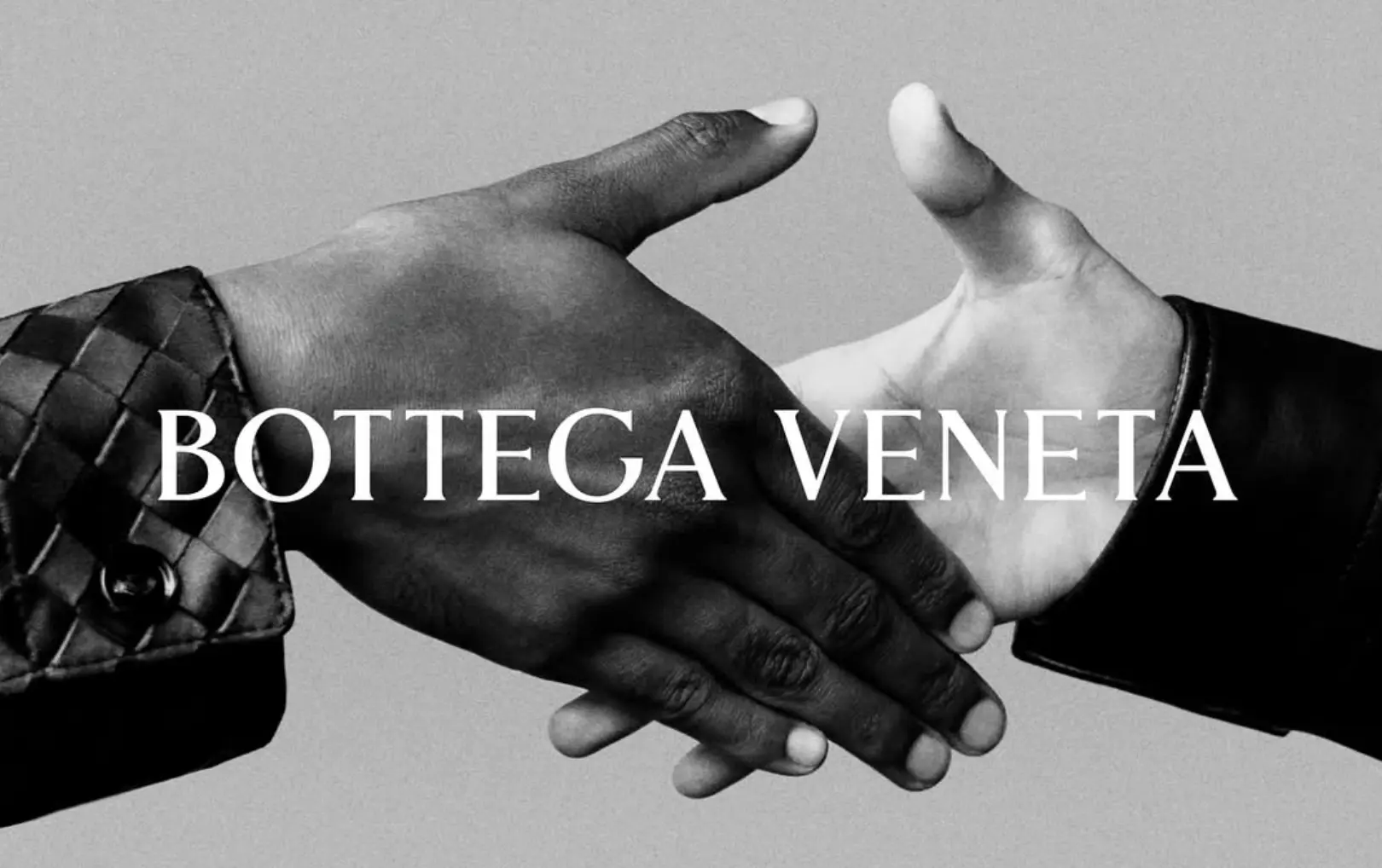The Marketing Strategy of Hermès
Updated on
Published on

Hermès stands out as a luxury brand with deep roots, a commitment to quality, and an understated marketing approach that has made it one of the most recognizable names in the world. Founded in 1837, Hermès has developed an approach to branding and marketing that blends exclusivity, heritage, and subtlety. This unique strategy, along with selective collaborations, has built an aura around Hermès that is admired across the globe.
Here is a look at the origins of Hermès, the principles that guide its marketing strategy, and the brand’s selective partnerships with celebrities and other companies.
The Origins of Hermès: A Commitment to Craftsmanship
Hermès began as a harness workshop, established in Paris by Thierry Hermès in 1837. Originally, the company focused on producing high-quality saddles, harnesses, and bridles for the elite of Europe. Hermès quickly gained a reputation for its fine craftsmanship and attention to detail, catering to the wealthy and discerning clientele who demanded the best.
By the late 19th century, Hermès began to expand its offerings, creating saddlery and other leather goods and eventually transitioning to handbags, scarves, and other luxury items. This evolution was guided by the family’s commitment to traditional artisanal techniques, which continues to this day. The company’s horse-riding heritage is still echoed in its brand aesthetics, including its famous equestrian logo and saddle stitching on leather products.
Hermès by the Numbers: Revenue, Birkin Production, and Global Reach
1. Annual Revenue
- Hermès generated €11.6 billion in revenue in 2022, marking a 23% increase from the previous year. This growth highlights the brand's enduring popularity and successful global expansion.
- Over the past decade, Hermès’ revenue has consistently grown by double digits, a rarity in the luxury sector.
2. Profit Margin
- Hermès consistently maintains one of the highest profit margins in the luxury industry. In 2022, its operating profit margin was a remarkable 40.5%, demonstrating the profitability of its exclusive, high-quality products.
3. Birkin Bag Production
- Hermès produces an estimated 12,000 Birkin bags annually. These bags are crafted entirely by hand, and each one takes about 48 hours to complete.
- Despite the seemingly large production, demand far exceeds supply, with Birkin waiting lists that can stretch to over six years.
4. Average Price of a Birkin Bag
- The starting price of a new Birkin bag is around $10,000, though this can increase significantly based on size, material, and customizations. Limited editions or exotic leather Birkins have been known to fetch up to $200,000 or more.
- Birkins are among the few luxury items that appreciate in value. Over the past few decades, Birkin resale values have increased by over 500%, outperforming many traditional investments.
5. Global Store Presence
- Hermès operates 300+ stores worldwide, with a strong presence in North America, Europe, and Asia. Their flagship store in Paris is one of the most iconic luxury destinations globally, reinforcing their brand's exclusivity and heritage.
These stats reveal the strength of Hermès’ brand strategy and the unmatched demand for its products, particularly the Birkin bag, which has become both a cultural icon and a unique investment item.

Hermès' Marketing Strategy: Key Elements
Hermès’ marketing approach is unique for several reasons:
1. Exclusivity Over Accessibility
- Hermès does not rely on mass marketing. Instead, it emphasizes rarity and exclusivity.
- Limited production helps maintain high demand and scarcity for Hermès products, especially for iconic items like the Birkin and Kelly bags.
- Waiting lists for products are common. The Birkin, for example, has become a symbol of status and patience.
- By keeping production limited and prices high, Hermès ensures its products remain aspirational, catering to a wealthy, global audience.
2. Subtlety in Advertising
- Unlike many brands that bombard consumers with advertisements, Hermès uses minimal advertising.
- When they do advertise, it is often through artistic, understated campaigns in select luxury magazines and platforms that align with the brand’s refined image.
- Hermès campaigns often feature their products in artistic or lifestyle settings, allowing the quality and craftsmanship to speak for themselves.
3. Focus on In-Store Experience
- Hermès stores are designed to reflect the brand’s heritage and luxury status, making the shopping experience immersive.
- The layout of a Hermès store is minimalist and curated, offering only a select number of items, and staff are trained to provide personalized attention.
- The stores also reflect Hermès’ artistic side, often featuring rotating installations and artistic displays. This not only attracts customers but also encourages them to spend more time in-store.

4. Heritage and Tradition
- The Hermès name has become synonymous with quality and tradition, qualities they emphasize in all aspects of their brand.
- Instead of attempting to modernize at the cost of its heritage, Hermès embraces its roots, letting customers feel they are purchasing a piece of history.
- This approach appeals to a clientele that values longevity and legacy, positioning Hermès as a brand that will last generations.
5. Sustainability and Quality Control
- Hermès controls every aspect of its production, from sourcing raw materials to manufacturing. This allows the company to maintain the high quality that its customers expect.
- Hermès promotes sustainability by emphasizing longevity in their products. Each item is crafted to last, reducing waste by discouraging a culture of disposability.
- Items such as leather bags are often repaired by Hermès artisans, further encouraging customers to invest in quality rather than trends.
Strategic Collaborations: A Measured Approach to Partnerships
While Hermès traditionally avoids flashy partnerships, it has engaged in a few selective collaborations that align with its brand ethos and appeal to its target audience.
Celebrity Endorsements: Limited but Impactful
1. Jane Birkin
- The creation of the Birkin bag, one of Hermès’ most iconic products, was inspired by actress and singer Jane Birkin in the 1980s.
- Birkin’s endorsement came organically, as she collaborated with Hermès’ then-CEO Jean-Louis Dumas to design a bag that was both stylish and practical. This authenticity has contributed significantly to the bag’s appeal.

2. Grace Kelly
- The Kelly bag, another hallmark of the brand, was named after actress and Princess of Monaco, Grace Kelly, after she was famously photographed carrying it.
- This association with royalty and old Hollywood glamour has contributed to the bag’s allure and elevated its status as a symbol of elegance and sophistication.

3. Victoria Beckham, Kim Kardashian, and Other A-Listers
- In recent decades, celebrities like Victoria Beckham and Kim Kardashian have become known for their extensive Hermès collections, especially the Birkin bag.
- Although Hermès does not pay these celebrities, their public endorsement has amplified the brand’s exclusivity and appeal. The Birkin has become one of the ultimate status symbols, partly because of these celebrities.
Collaborations with Designers and Artists
- One of the most notable collaborations of recent years was the Hermès x Apple Watch, which launched in 2015.
- The Hermès strap for the Apple Watch combines luxury and technology, bridging the gap between traditional craftsmanship and modern technology.
- The partnership allowed Apple to position its product as a luxury item while enabling Hermès to engage a younger, tech-savvy audience without compromising its brand values.

2. Collaborations with Artists
- Hermès has collaborated with a variety of artists for limited-edition scarves, reflecting its commitment to art and design.
- The scarf designs often feature intricate patterns and themes from global cultures, turning each piece into a wearable artwork. This not only celebrates the heritage of silk craftsmanship but also allows Hermès to connect with art collectors and aficionados.
3. Limited Edition Partnerships
- Hermès’ partnership with the Japanese designer Rei Kawakubo of Comme des Garçons resulted in a limited-edition scarf collection. This collaboration allowed Hermès to merge traditional craftsmanship with avant-garde design, attracting fashion-forward consumers who might not typically engage with the brand.

- Another limited partnership involved the French artist Pierre Marie, who created designs for the brand’s silk scarves, adding a fresh perspective while respecting the brand’s artistic heritage.

Digital Strategy: Maintaining Tradition in the Digital Age
Hermès has approached the digital space carefully, maintaining a minimalist and selective approach to online marketing:
Social Media Presence
Hermès uses platforms like Instagram to showcase their products in a curated, artistic way without overt selling. Their posts emphasize lifestyle and craftsmanship, presenting Hermès items in artistic settings that appeal to a younger generation without sacrificing brand values.
E-commerce Limitations
While Hermès offers some products online, they have kept many items exclusively available in-store, including the coveted Birkin and Kelly bags.
By limiting access online, Hermès continues to drive customers to its stores, preserving the in-store experience that is so central to its brand philosophy.

The Impact of the Hermès Strategy
Hermès’ marketing approach has created a brand identity that is both aspirational and authentic. While many luxury brands aggressively market their products and collaborate with a broad range of celebrities, Hermès has stayed true to its roots, allowing quality and heritage to lead. This strategy has positioned Hermès as one of the most valuable luxury brands in the world, with a reputation that resonates globally.
Key Takeaways
- Hermès emphasizes scarcity and exclusivity, focusing on quality over quantity.
- The brand relies on heritage and tradition, incorporating artistry and timeless design into every product.
- Selective celebrity endorsements and partnerships keep the brand relevant without compromising its identity.
- Hermès’ collaborations, such as those with Apple and limited-edition artist scarves, balance heritage with modernity, attracting younger consumers.
- By limiting its online offerings, Hermès maintains its prestigious in-store experience, ensuring customers continue to associate the brand with luxury and exclusivity.
Hermès: Selling Quiet Luxury
Hermès stands out in luxury. Its marketing is subtle, but the impact is powerful. The brand's strategy focuses on scarcity and status, creating a brand experience that other fashion houses cannot compete with. Hermès stays on top for this very reason. Their bags, especially the Birkin and Kelly, symbolize the epitome of wealth and class, which has made the brand a global icon. Here’s how Hermès has crafted a marketing approach that doesn’t just sell products but creates lasting value and status.
Any woman lucky enough to untie the ribbon on that iconic orange Hermès box knows the thrill it brings, and here’s why:
1. Scarcity and Exclusivity: Creating Demand by Limiting Supply
Hermès limits production to drive demand. Owning a Hermès bag is as much about the experience as the item itself. Here’s how they do it:
- Controlled Production: Hermès produces a limited number of bags each year. Each bag is handmade by an artisan, taking over 15 hours to complete, which ensures exceptional quality and restricts supply.
- Exclusive Shopping Experience: Buying a Hermès bag is not as simple as walking into a store. Customers often wait months or even years, depending on the model. This exclusivity makes each bag feel more like a privilege than a purchase.
- Mystique of Availability: Hermès doesn’t make it easy to find popular items like the Birkin or Kelly bags, creating an aura of mystery. This exclusivity turns anyone carrying a Hermès bag into a standout presence, wherever they go. A bag you simply cannot take your eyes off of.
By keeping availability low and quality high, Hermès transforms its products into luxury assets, creating demand through the allure of scarcity.
2. Targeting the Old Money Audience
- Heritage and Enduring Quality: Hermès speaks to an old money audience that values luxury as a form of self expression. Their prices, sometimes controversial, naturally cater to the old money audience, positioning Hermès at a level accessible only to those with established wealth.
- Understated Design: Hermès pieces are known for their simple, classic design, free of excess branding. This straightforward aesthetic is crafted for those who appreciate quiet sophistication without the need for show.

3. Making Hermès a Cultural Icon
A Hermès item is instantly recognizable. The brand has turned its products into symbols of wealth and refinement without ever relying on paid endorsements.
- Organic Celebrity Endorsement: Hermès does not pay celebrities to wear its products. Instead, the brand lets celebrities come to it, creating authentic status associations. This organic approach keeps the brand image exclusive and aspirational.
- Legacy and History: Hermès started in 1837 as a harness workshop, and the brand’s heritage gives it an air of trust and quality. The longstanding history makes each product feel like a piece of tradition, not just an accessory.
- Royal Connections: Hermès quickly gained favor among royals and aristocrats, and this elite status was embodied in the Kelly bag, named after Princess Grace Kelly of Monaco, who famously used it to shield her pregnancy from paparazzi. This cemented Hermès as a brand of aristocratic allure and timeless luxury, favored by royals themselves.
- Iconic Product Designs: The Birkin and Kelly bags are carefully crafted to be “forever statements.” Their designs appeal to those who value sophistication and tradition over flashy, short-lived trends. This is a bag that will never lose it’s value.
- Belts, Bracelets, and Home Goods as Style Statements: Hermès doesn’t stop at handbags. The H-buckle belts and bracelets have become luxury staples. Even items like the Avalon blanket or Balcon du Guadalquivir tableware have become indicators of status for those who value luxury as an extension to lifestyle.

Through quiet prestige and powerful product recognition, Hermès products have become more than items—they’re cultural markers of taste and affluence.

4. Quality Goods = Quality Marketing
Unlike many brands that rely on automation, Hermès focuses on quality artisanship, with each item crafted by hand from start to finish.
- Dedicated Artisans: Each Hermès bag is made by a single artisan, trained for years to master specific techniques. This dedication ensures a personal connection and uncompromising attention to detail.
- High-Quality Materials: Hermès uses only the finest materials, from exotic leathers to special hardware, sourced from specific regions. This emphasis on quality means each piece is durable and luxurious.
- Limited Quantity, High Quality: Hermès intentionally produces fewer items to maintain high standards. This helps the brand retain its reputation for durability, which means Hermès products often last for decades, becoming family heirlooms.

This focus on craftsmanship reinforces Hermès’ ability to market an image as a luxury brand that prioritizes quality over quantity.
5. Value Retention: Hermès Bags as Investment Pieces
Hermès bags do not depreciate in value like most consumer goods; instead, they often increase in worth over time.
- Appreciation in Value: Studies show that Hermès bags, particularly the Birkin, have consistently increased in value, outperforming traditional investments many times. It is a bag that continues to increase in value. Buyers see Hermès bags as long-term investments that retain value and even appreciate.
- High Demand in Resale Markets: Scarcity has fueled demand in resale markets. Hermès bags often sell for much more than their original price, especially if they’re rare or limited-edition models.
- Limited-Edition and Rare Collectibles: Hermès occasionally releases special editions and unique designs that collectors prize. Some limited-edition Birkins have sold for hundreds of thousands at auction, reinforcing Hermès’ position as a luxury investment.
By creating products that hold and grow in value, Hermès has attracted a buyer base that sees the brand as a safe, rewarding investment.
6. Selective Marketing and Consistent “Quiet Luxury” Image
Hermès’ approach to advertising and brand presence is as refined as its products, focusing on indirect methods and controlled experiences.
- Minimal Traditional Advertising: Hermès doesn’t rely heavily on ads. Instead, it maintains a low-profile presence, allowing word of mouth and social proof to create desire. This restraint in advertising only adds to the brand’s mystery.
- Experience-Driven Stores: Hermès boutiques are designed to be unique and immersive. Some locations even feature sections where artisans work on items in-store, providing customers a behind-the-scenes glimpse into the making process and reinforcing the brand’s dedication to quality.
- Unified Brand Voice: Across social media and stores, Hermès maintains a cohesive, timeless brand image of quiet luxury. This uniformity helps reinforce the brand’s identity as elegant and of true class.
By selectively marketing itself and focusing on in-store experiences, Hermès solidifies its image as an exclusive, high-status brand.
7. Community and Social Proof: The Cult of Hermès
Hermès has cultivated a loyal following, which has become a vital part of its marketing strategy.
- Natural Exclusivity: The high price and limited availability of Hermès bags ensure that only a select few can buy them. This exclusivity has created a community of Hermès owners who value the brand’s uniqueness.
- Influence of High-Profile Clients: Hermès customers include celebrities, executives, and royalty, creating an aspirational community. This high-powered clientele serves as proof of Hermès’ prestige, helping to build its reputation without direct advertising.
- Social Media Buzz: Hermès products frequently appear on social media, shared by collectors and enthusiasts who value the brand’s understated luxury. These posts keep Hermès relevant and desirable, adding to its appeal without direct advertising.
The cult-like following Hermès has developed strengthens its image, making each item a status symbol recognized by a global community.

Why Hermès’ Quiet Marketing Strategy Works
Hermès has mastered the art of timeless luxury by focusing on quality, exclusivity, and scarcity. This approach attracts a specific type of buyer—those who value tradition, exclusivity, and investment potential over flashy branding. Hermès does not follow trends; it creates legacy products that hold both cultural and financial value.
By focusing on scarcity, quality, and an exclusive shopping experience, Hermès doesn’t just create products; it builds lasting value. Every Hermès piece carries with it a legacy, reinforcing Hermès' status as the ultimate luxury brand.







